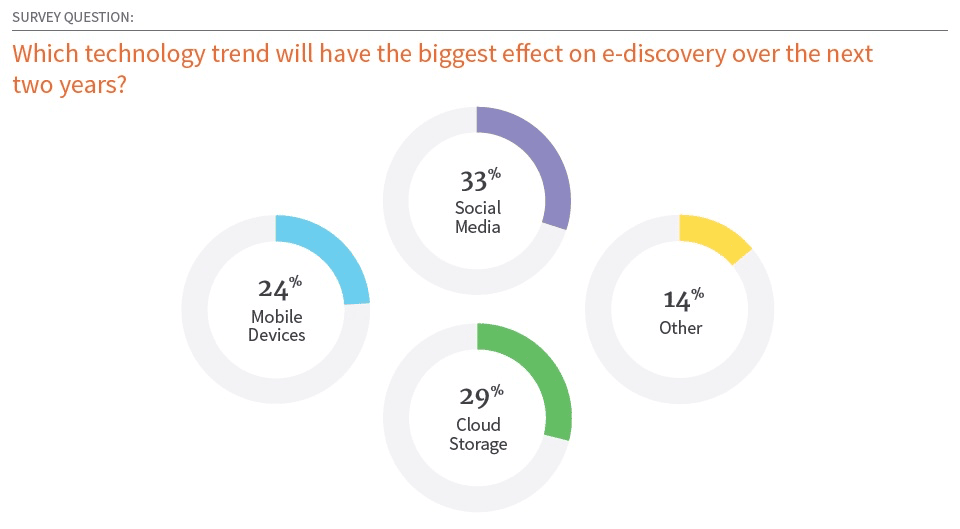The good folks at Exterro recently released a very interesting report titled “Federal Judges Survey, eDiscovery Best Practices and Trends.” The title includes a link to download the report, which I highly recommend reading as it is good to know what the judges who rule on eDiscovery all the time are thinking. Overall, the report calls for some necessary disruptive change in the practice of eDiscovery in order to demonstrate competency. There are some excellent tips in the report on how eDiscovery professionals can improve and what kinds of trends we should be on the lookout for.
One finding stood out to me in particular – the Judges surveyed felt that social media would be the technology trend with the biggest effect on eDiscovery over the next two years.
As the report states, “Attorneys must be aware that all emerging technology platforms are just like email; if they hold relevant evidence you are accountable for preserving the data.” At X1, we’ve known this for quite some time. We’ve blogged about cases where the old way of doing social discovery – print screen – has been shown to lack authenticity standards and not meet the duty of competency that lawyers must meet. To see the Judges recognize this as a critical trend rather than just a niche corner of the market validates what we have known for years.
It is no coincidence that X1’s Social Discovery product continues its rapid upward trajectory. There is simply no other product on the market that offers a true investigative platform for this critical new data type. Such a social media investigative platform will include:
- Tight API connections to the major social media publishers like Facebook, LinkedIn, Twitter, and Instagram. The API connection allows for the capture of unique metadata that each publisher adds to its data.
- A web crawler and capture capability that creates a copy of the page to be stored for processing into a preservation repository.
- The ability to keep data forensically sound. This requires calculating MD5 hash values of individual items upon capture and maintaining those values through export. The platform must keeps logs and reports of all actions on data. It also must be able to use metadata to establish chain of custody and authentication.
The challenge with social media – unlike email – is that much of the data resides outside the walls of an organization. Collection of social media becomes a challenge. Companies cannot simply call Facebook or Twitter and request all of the information for various custodians. It is possible to take screenshots of various web pages or social media sites, but as case law points out, screenshots are not necessarily admissible as evidence. Plus, screenshots take a technical toll on eDiscovery – they can be difficult to index and may require OCR, which still may not be able to pull text out of the image. That is where an investigative platform like X1 Social Discovery is so important to a competent eDiscovery practice.

